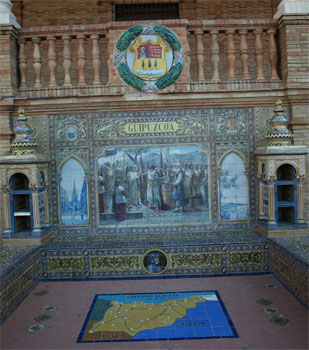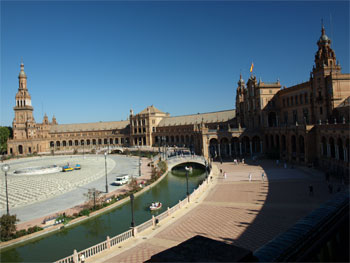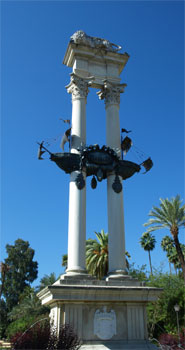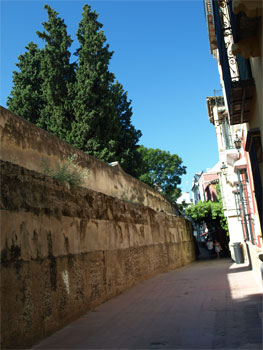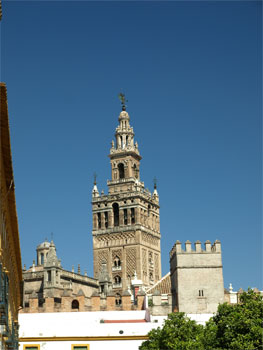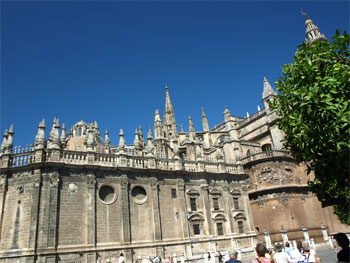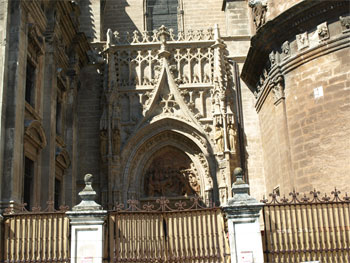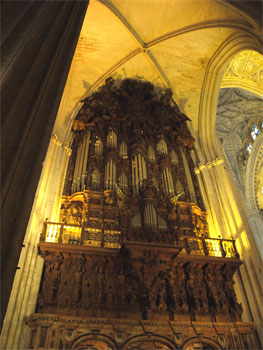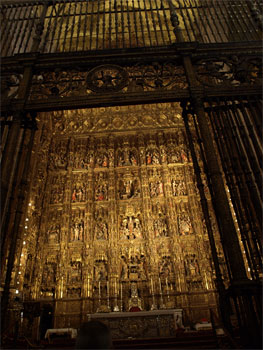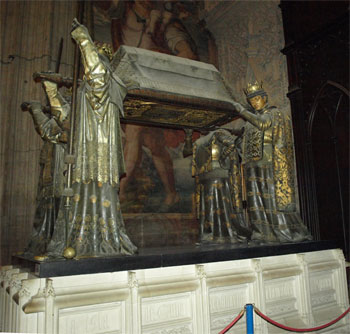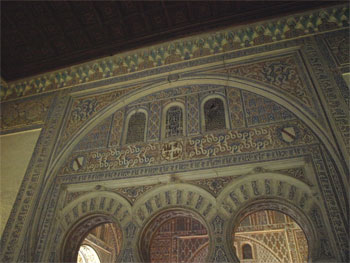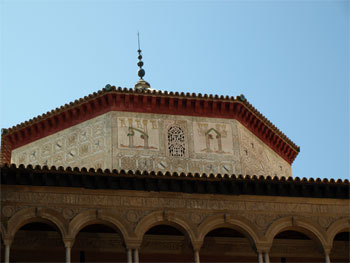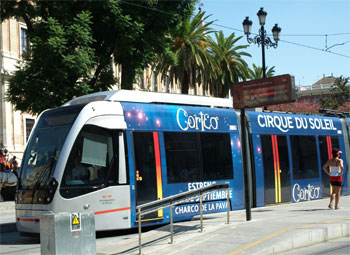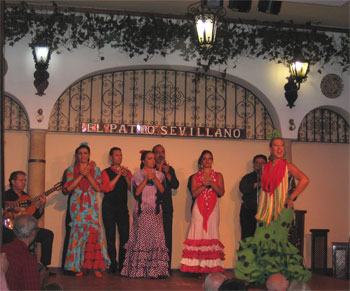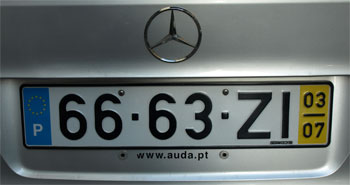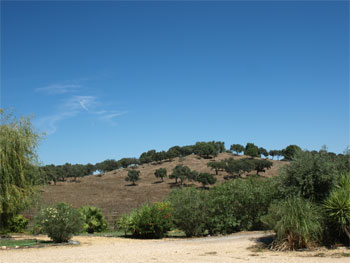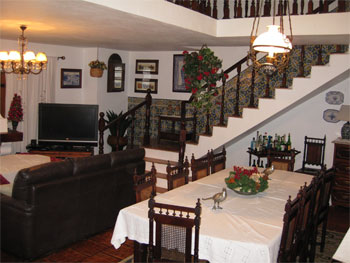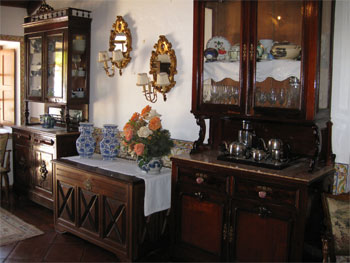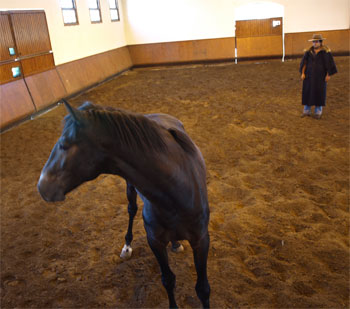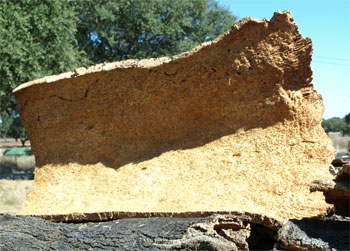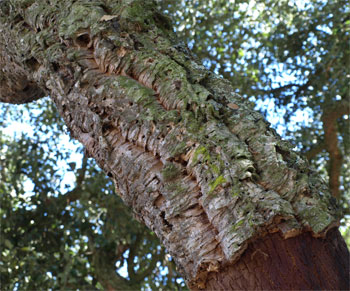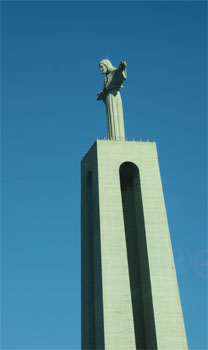Tues., 9/7/11 - Seville, Spain
In 1929 Seville hosted the Exposition of the Americas (the Ibero-American Exposition). South and Central America and the U.S. built lovely pavilions that have been recycled into consulates, schools, hotels, etc. The Square of the Americas and gardens has over 3,000 trees - fichus, pine, eucalyptus, palms, jacaranda, pomegranates, etc. Seville is full of pretty architecture and has many gardens.
Victor took us to Plaza de Espana and it may be the highlight of the trip for me. It took eleven years to build this grand structure, which is a semicircular building with a large tower on each end, one in honor of King Ferdinand and the other for Isabella. There are four bridges that cross a semicircular moat that represent the four regions or old kingdoms of Spain. Along the plaza in front of the building arcade were 50 sections, one for each county/province of Spain. They were arranged alphabetically and each alcove had a tile map on the floor, a tile coat of arms on the wall, shelves for brochures advertizing their area, and a tile bench to sit on. The impression we got from this plaza is that Spain is a country with national pride but honors each individual area. It is a wonderful concept. Unfortunately it took until 1965 to pay off the debt for this exhibition. The building is now used for army offices.
|
|
|
|
On our way to the old city we walked past the Jardines de Murillo (gardens) and the monument to Christopher Columbus. We entered the old city walls and into the old Jewish quarter. More narrow curvy alleys and shops with balconied apartments above. We stopped in the Immaculate Conception monument in the Plaza de Triunfo and looked at the cathedral tower, Giralda, which is a symbol of Seville that was built between 1184 and 1198 by the Arabs. Christians converted the mosque to a church after they took over in 1248. The tower has undergone many disasters (earthquakes) and has been added to and rebuilt by times.
|
|
Monument to Christopher Columbus
|
Old city walls |
Window garden
|
Giralda |
Our local tour took us on a lengthy visit to the Cathedral of Seville. It was built as an elaborate mosque and then converted in the 15th c. to this cathedral (Santa Maria). It took over 125 years to construct and is still being reconditioned and enhanced. Mass is celebrated in a small chapel. At Christmas and Easter it is celebrated at the silver alter. Most of the time the building is open as a museum to finance its upkeep. In the middle of huge Moorish pillars is the elaborate carved mahogany (from Cuba) choir room with two sets of organ pipes consisting of more than 7,000 pipes, but played from one console - stereo effect! Originally it took 80 men to pump the air into the pipes. Now it is done electronically. The main high altar is all carved wood covered in gold leaf with 44 individual squares with a 3D picture of Jesus' life from the New Testament. The scenes taught illiterate people the Biblical stories. The nativity is at the bottom and the Pieta and 12 apostles at the top. |
|
Cathedral of Seville
|
Cathedral of Seville |
Organ in the Cathedral of Seville
|
Cathedral of Seville - Iconases of the high altar |
At the south end is the tomb of Christopher Columbus. Four bronze statues, representing the four Christian kingdoms of Spain, hold the casket on their shoulders. DNA testing has proved that 70% of the bones in the casket are those of Columbus even though his body was moved from Spain to San Salvador to Cuba and back to Spain. Columbus is revered in Spain for having the initiative and success of sailing west instead south and then east around Africa to access new land and a different route to India and China after the Ottomans closed the Silk Road. It was a bonus that his "discovery" yielded gold, silver, tobacco, corn, tomatoes, etc. for the enrichment of Spain and the colonization of new Spanish lands.
|
Cathedral of Seville - Tomb of Christopher Columbus |
We finally had some time on our own and decided on a quick trip through the palace, the Alcazar. It again was built by the Moors and reused by the Catholic monarchs after ousting the Arabs.
|
Inside the Alcazar |
Inside the Alcazar
|
The Alcazar |
Building in downtown area
|
Tram back to the hotel |
Bullring of Seville
|
Tonight our group went to a dinner theater, El Patio Sevillano, for an explanation of Flamenco and then dinner and a Flamenco performance. It is thought that Flamenco started in the 16th c. with gypsies and was refined and grew into a part of the national culture in the 1800's. Some of the dances express passion and, sometimes, political feelings. Flamenco has three elements: dance, singing, and guitar. The dresses are flouncy, to be showy, but earrings, combs in the hair, fans, shawls, hats are all used to enhance the hand movements. Dinner was so-so but the dancing show was very good.
|
Flamenco dancers |
Flamenco dancers
|
Thurs., 9/8/11 - Horse Farm and Lisbon, Portugal
It was a four-hour ride from Seville to our stop at a horse ranch in Portugal and then on to Lisbon.
We crossed a bridge over the Guadiana River and entered Portugal where we started to see a slightly different landscape with many cork trees instead of olive trees and stork nests on top of many poles. The storks must be in Morocco now, not here.
We got off the highway, onto a narrow two lane paved road and then a gravel/dirt farm road out to the Brito Paes Horse Ranch. We were served lunch in an old cow barn converted into a dining room - for tour groups. The food was wonderful: vegetable soup, homemade bread, olives, rice with peas and corn, lettuce salad with a sweet olive and vinegar dressing, chicken in a nice sauce, and then chocolate cake and homemade cherry ice cream with hot chocolate sauce.
Portugal
|
Countryside at the Brito Paes Horse Ranch
|
Farmhouse
|
Farmhouse |
After touring the farmhouse we had a lesson on horse breeding. This farm has 1000 acres and has been in the family since 1778. In 1974 communist peasants destroyed the farm and sold off the horses. In 1977 Maria and her husband bought the farm back, rebought their horses, and rewrote the pedigree books from memory. There are now 100 beef cattle (Limousin); 30 pure bred Lusitanian mares; and five stud stallions, two pure Lusitanian, two pure British, and one German pedigree. Pure Lusitanian colts/foals are bred for bullfighting and dressage, the British-Lusitanian mix are trained as jumpers, and the German-Lusitanian are dressage horses. A mare and stud are kept in the barn until she is "covered" and then she goes back in the wild to drop the foal after 11 months. After two months the foal is separated from the mare and put in a different pasture. For three years the mares and stallions stay separated. At three years they are broken and ridden, trained, and sold - mostly on the Internet for $25,000 to $80,000. We watched a 2-year-old pure Lusitanian prance around the barn/ring, then a 4-year-old Lusitanian/German mix and then a 9-year-old trained Lusitanian/British horse ridden by the owner's son. This was an interesting diversion on our long ride.
|
|
A 2-year-old pure Lusitanian |
A 9-year-old trained Lusitanian/British horse ridden by the owner's son - the coat is traditional - it certainly wasn't cold!
|
In the afternoon as we continued on toward Lisbon, we stopped in a tiny village to have a close look at Portuguese cork oak trees. A fungus has destroyed much of the cork here, which opened up the market for Moroccan cork.
|
Stacked cork bark
|
Cork bark |
Cork bark on the tree
|
Approaching Lisbon, on the west side of the River Tagus is a replica statue of the Rio Christ. It was put up by the people of Portugal as thanks to the government for staying out of WWII.
|
|
Replica statue of the Rio Christ (as seen from across the Tagus River) The suspension bridge - 25th of April bridge - was renamed after the revolution April 25, 1974 |
Replica statue of the Rio Christ
|
After we arrived, we went for a short get-acquainted walk in the area of our downtown hotel.
| Return to Top | Return to Itinerary | Return to Dreamcatcher Home Page |


